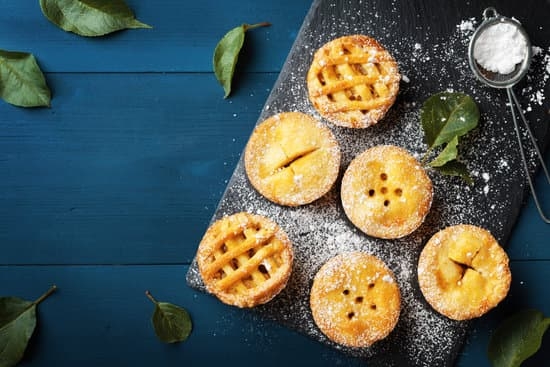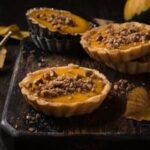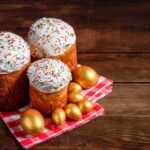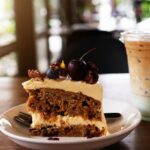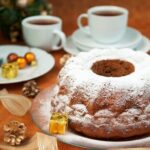Have you ever wondered what can you use to decorate a cake and make it truly stand out? Cake decoration plays a crucial role in creating visually appealing desserts that not only taste delicious but also look irresistibly attractive. Whether it’s a special occasion or just a simple treat for yourself, the way a cake is decorated can elevate the entire experience.
When it comes to decorating cakes, there are countless options available that cater to different tastes and preferences. From elegant and intricate designs to fun and whimsical creations, the possibilities are endless. In this article, we will explore various decorating tools and techniques that can help you unleash your creativity and transform an ordinary cake into a true masterpiece.
From fondant to buttercream frosting, sprinkles to edible flowers, the world of cake decoration is full of exciting possibilities. Each decorating element brings its unique flair and allows you to customize your cake according to your desired theme or aesthetic.
So, whether you’re a seasoned baker looking to hone your skills or a beginner eager to try your hand at cake decoration, this article will guide you through some of the most popular options available in the realm of sweet treats.
Fondant
One of the key advantages of using fondant is its ability to hold its shape well, making it suitable for creating 3D decorations such as flowers, characters, or intricate patterns. Its smooth texture also lends itself well to blending colors seamlessly and achieving a polished, professional appearance on cakes.
Additionally, fondant can be flavored with extracts or oils to enhance the taste of the cake along with the visual appeal – offering a complete sensory experience for those indulging in your sweet creation.
Incorporating fondant into your cake decorating repertoire opens up a wide range of possibilities for customization. From sculpted designs and textured finishes to embossed patterns and elegant embellishments, fondant allows you to transform simple cakes into works of art.
By combining different techniques such as painting on fondant with food coloring, using stencils for detailed designs, or adding edible prints onto the surface, you can truly elevate the appearance of your cakes and impress both clients and guests alike. With fondant as one of your go-to tools for decorating cakes, the only limit is your own creativity.
Buttercream Frosting
One of the key benefits of using buttercream frosting is its flexibility in design. With just a piping bag and a variety of piping tips, you can achieve numerous looks and textures on your cake. From delicate rosettes to elaborate borders, the possibilities are endless when it comes to decorating with buttercream frosting. Here are some popular techniques that you can try out:
- Rosettes: Creating beautiful flower-like designs by piping swirls of buttercream in a circular motion.
- Borders: Adding decorative borders around the edges of your cake for a polished finish.
- Writing with icing: Personalizing your cake by writing messages or names using buttercream frosting.
In addition to its versatility in design, buttercream frosting also offers a creamy texture that complements the moistness of the cake layers. Whether you prefer a smooth finish or a more textured look, buttercream can be easily adjusted to suit your preferences.
Plus, it acts as an adhesive for attaching edible decorations like fondant accents or sugar flowers. The keyword “what can you use to decorate a cake” takes on new meaning with buttercream frosting as the answer – it’s not just about what materials but also about the endless creative possibilities they offer when paired with this classic icing choice.
Sprinkles and Edible Glitter
In addition to sprinkles, edible glitter is another fantastic way to add shimmer and shine to your baked creations. Whether you opt for traditional glitter made from sugar or more modern varieties like disco dust or luster dust, edible glitter can take your cake decorating game to the next level.
Simply dust the glitter over frosted surfaces or mix it into clear liquids like alcohol or extracts for painting delicate designs on cakes. The light-reflecting particles create a dazzling effect that will dazzle your guests and make your desserts stand out.
Not only do sprinkles and edible glitter enhance the aesthetic appeal of your cakes, but they also provide a delightful crunch or pop of flavor with every bite. They are perfect for adding texture and dimension to an otherwise smooth surface, adding both visual interest and a sensory experience for anyone enjoying your baked goods.
So next time you’re wondering what can you use to decorate a cake, consider reaching for some sprinkles and edible glitter to unleash your creativity and bring a touch of sparkle to your desserts.
| Sprinkles | Edible Glitter |
|---|---|
| Versatile in shapes, sizes, colors | Adds shimmer and shine |
| Instantly elevates visual appeal | Dazzling effect with light-reflecting particles |
| Provides crunch and flavor | Enhances texture and dimension |
Fresh Fruits and Berries
One popular way to incorporate fresh fruits into cake decoration is by creating a fruit arrangement on top of the cake. This can be done by slicing the fruits into decorative shapes like hearts, stars, or flowers and arranging them artfully on the frosting.
Another option is to use whole berries or small fruits to create patterns or borders around the edges of the cake. Not only does this add a pop of color to the dessert, but it also provides a juicy burst of flavor with every bite.
In addition to being visually stunning, using fresh fruits and berries as cake decorations also brings a touch of freshness and healthiness to an otherwise indulgent treat. With more people opting for lighter and fruitier desserts, incorporating fresh fruits into cake decorations is a wonderful way to cater to different taste preferences.
Whether you’re decorating a birthday cake, wedding cake, or just a simple tea-time treat, fresh fruits and berries are versatile elements that can complement any type of cake beautifully.
| Fresh Fruits | Benefits |
|---|---|
| Strawberries | Rich in Vitamin C |
| Blueberries | Packed with Antioxidants |
| Mango | Sweet and Tropical Flavor |
| Kiwi | Unique Texture and Color |
Chocolate Decorations
When it comes to decorating cakes, chocolate is a versatile and delicious option that adds a touch of elegance and decadence to any dessert. One popular way to incorporate chocolate into cake decorations is by using chocolate ganache drizzles.
Ganache is made by combining chocolate and cream, creating a smooth and rich mixture that can be drizzled over cakes for a glossy finish. Whether you opt for dark, milk, or white chocolate ganache, the drizzles add a luxurious feel to the cake and can be customized in different patterns or designs.
Another creative way to adorn cakes with chocolate is through the use of chocolate molds. Chocolate molds come in various shapes and sizes, allowing bakers to create intricate designs on their cakes with ease.
From delicate flowers to geometric patterns, the possibilities are endless when it comes to using chocolate molds for decoration. Simply melt your choice of chocolate, pour it into the molds, let it set, and then carefully place the molded chocolates on top of the cake for a stunning presentation.
In addition to ganache drizzles and chocolate molds, bakers can also experiment with other chocolate decorations such as curls, shavings, or even tempered chocolate shards. These elements not only add texture and visual interest to the cake but also provide an indulgent taste experience for those enjoying the dessert.
With a bit of creativity and practice, incorporating chocolate decorations into cake designs can elevate any sweet treat from ordinary to extraordinary. So next time you’re wondering what you can use to decorate a cake, consider exploring the world of chocolate decorations for a truly show-stopping dessert.
Piping Techniques
Rosettes
One of the classic and versatile piping techniques for cake decoration is creating rosettes. Rosettes are beautiful swirls of icing that can add a touch of elegance to any cake. To achieve perfect rosettes, start by holding the piping bag at a 90-degree angle to the cake surface. Squeeze the bag in a circular motion, starting from the center and working your way outwards. Practice makes perfect when it comes to achieving consistent and uniform rosettes on your cakes.
Borders
Borders are another essential piping technique that can elevate the look of your cakes. Borders can be simple or intricate, depending on your skill level and design preference. You can create borders using different tips such as star tips, round tips, or even specialty tips for unique designs. Borders not only frame the edges of your cake but also add a polished finish to your overall cake decoration.
Writing With Icing
Personalizing a cake with a special message or name is made possible through writing with icing. Whether you are celebrating a birthday, anniversary, or any other special occasion, writing with icing can add a meaningful touch to your cake decoration. Practice your handwriting with different styles of lettering using a small round tip on your piping bag. Remember to plan out the spacing and placement of your words before you begin piping on the cake surface.
Experimenting with various piping techniques like rosettes, borders, and writing with icing can open up a world of creative possibilities for decorating cakes. With patience, practice, and attention to detail, you can master these techniques and create intricate designs that will impress anyone who enjoys your delicious creations. Explore different tips and techniques to find what works best for you and let your imagination run wild when it comes to embellishing cakes for any occasion.
Edible Flowers
When it comes to using edible flowers for cake decoration, it is essential to ensure that they are indeed safe for consumption. It is recommended to purchase organic or pesticide-free flowers from reliable sources specifically intended for culinary use.
Before placing them on the cake, make sure to wash the flowers thoroughly and remove any green parts or stems that may not be edible. Edible flowers can be used whole as a decorative element on top of the cake, scattered around the base, or even pressed into fondant or buttercream for a more artistic approach.
The versatility of edible flowers allows for endless creative possibilities when decorating cakes. From vibrant rose petals delicately placed on a wedding cake to small lavender buds adorning a birthday dessert, these natural embellishments can elevate the appearance of any sweet treat.
Whether you are aiming for a rustic and bohemian look or a sophisticated and minimalist design, edible flowers offer a touch of freshness and botanical charm that will leave your guests in awe of your culinary skills. So next time you’re wondering what you can use to decorate a cake, consider incorporating some edible flowers for a show-stopping presentation.
Final Tips and Tricks
Decorating a cake can seem like a daunting task, especially for beginners looking to achieve professional-looking results. However, with the right tips and tricks, anyone can create beautiful and visually appealing cake decorations. One of the key things to remember when decorating a cake is to start with a smooth and even layer of frosting. This will provide a clean canvas for your decorations and ensure a polished finish.
When it comes to choosing what to use to decorate a cake, consider experimenting with different techniques and ingredients. For example, piping techniques can add intricate designs and patterns to your cakes, such as elegant rosettes or decorative borders. Additionally, using edible flowers like roses or lavender can elevate the aesthetic of your cake and add a touch of natural beauty.
Another helpful tip for beginners is to practice patience and precision when decorating a cake. Take your time when piping icing or applying fondant decorations, as rushed work can result in uneven finishes. Additionally, don’t be afraid to get creative and think outside the box with your cake decorations. Whether it’s incorporating fresh fruits, edible glitter, or chocolate decorations, there are endless possibilities for enhancing the visual appeal of your cakes.
Conclusion
In conclusion, the art of cake decoration is essential in creating a visually appealing dessert that not only tastes delicious but also looks stunning. Throughout this article, we have explored various creative ways to decorate cakes, from using fondant for intricate designs to piping techniques for detailed decorations. The possibilities are truly endless when it comes to decorating a cake, and each method offers its own unique touch to elevate the look of your sweet creation.
Whether you prefer the versatility of fondant, the delicate beauty of fresh fruits and berries, or the whimsical charm of edible flowers, there is no shortage of options when it comes to adorning your cake. From buttercream frosting to chocolate decorations to sprinkles and edible glitter, each element adds its own flavor and flair to the overall presentation. The key is to experiment with different decorating tools and techniques to find what resonates with your personal style and taste.
In the world of cake decoration, creativity knows no bounds. With a sprinkle here and a swirl there, you can transform a simple cake into a work of art that not only pleases the palate but also delights the eyes.
So next time you’re wondering what can you use to decorate a cake, remember the plethora of options available at your fingertips. Let your imagination run wild and embark on this sweet journey of turning a plain dessert into a masterpiece worth savoring.
Frequently Asked Questions
What Can I Top a Cake With Besides Frosting?
There are plenty of options to top a cake besides frosting. You can use fresh fruit, whipped cream, ganache, nuts, edible flowers, or even a dusting of powdered sugar. These alternatives can add different flavors and textures to your cake.
What Is a Good Substitute for Cake Frosting?
A good substitute for cake frosting depends on personal preferences and dietary restrictions. Some options include glazes made from powdered sugar and citrus juice, chocolate ganache, cream cheese icing, or even just a simple dusting of cocoa powder. These alternatives can still add sweetness and flavor to your cake.
How to Decorate a Cake for Cheap?
Decorating a cake for cheap doesn’t have to be difficult. Consider using simple ingredients like sprinkles, fresh fruit slices, crushed cookies, or edible glitter to decorate your cake without breaking the bank.
You can also try using stencils or cut-out designs with powdered sugar or cocoa powder for an easy and inexpensive decoration option. Remember that creativity is key when looking for affordable ways to make your cake look visually appealing without spending too much money.

Welcome to our cake decorating blog! My name is Destiny Flores, and I am the proud owner of a cake decorating business named Cake Karma. Our mission is to provide delicious, beautiful cakes for all occasions. We specialize in creating custom cakes that are tailored specifically to each customer’s individual needs and tastes.

